Solar Dryer
-------------
Two basic types of drying methods are:
(1) Traditional solar drying (2) Controlled solar drying :(Cabinet dryer, Convective dryer)
1. Traditional solar drying:
It is a simplest method of drying used in most of the developing countries. In this type of solar drying, direct solar energy is used for drying and preservation of food and agriculture crops. Traditional sun drying takes place by storing the product under direct sunlight in the open sky. The drying process removes moisture and helps in preservation of the product.
.jpg)
Sun Drying of Mango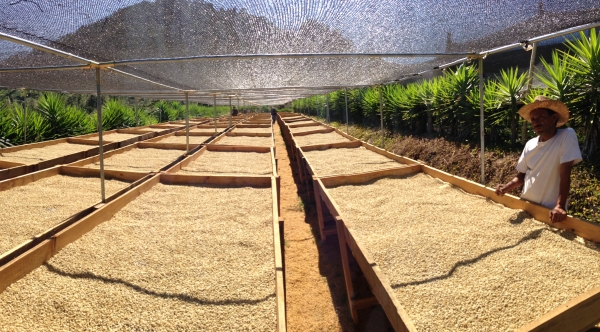
Sun Drying of Coffee Under Net .JPG)
Natural Drying of Chilly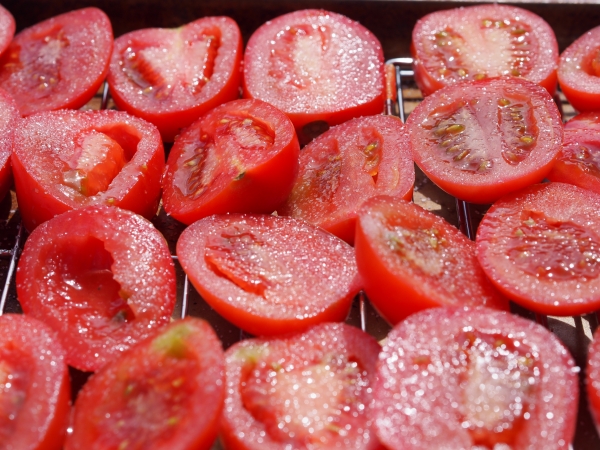
Natural Drying of TomatoesAdvantages:
(i) No technology involved.
(ii) Low capital and operating costs.
(iii) Little expertise is required.
(iv) No external power is required.
(v) No skill is used.
Disadvantages:
(i) Contamination of the product takes place due to dirt and insects
(ii) Spoilage takes place due to sudden and unpredicted rain.
(iii) There is no control of temperature over crop drying.
(iv) Over drying may cause loss of germination power, nutritional changes& sometimes complete damage occurs.
(v) It is a slow process & an uncontrolled drying.
(vi) Quality deterioration takes place in traditional drying.
(vii) Losses occurs due to birds, rodents and insects
(viii) It is labour intensive and time consuming
(ix) It requires large area & depends upon the weather condition
2. Controlled solar drying
Cabinet dryer:
A cabinet type solar dryer is a controlled solar drying system and it is suitable for small scale use. The solar cabinet dryer in its simple form consists of a wooden or any other material box of certain width and length (length is generally kept as three times its width), insulated at its base and preferably at the sides and covered with a transparent roof. The inside surfaces of the box are coated with black paint and the product to be dried is kept in the trays made of wire mesh bottom. These trays loaded with product and kept through a door provided on the rear side of the drier.
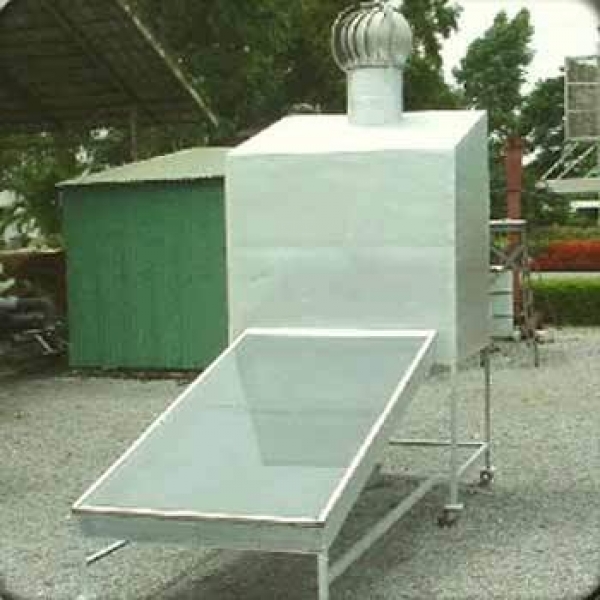
Solar Air Dryer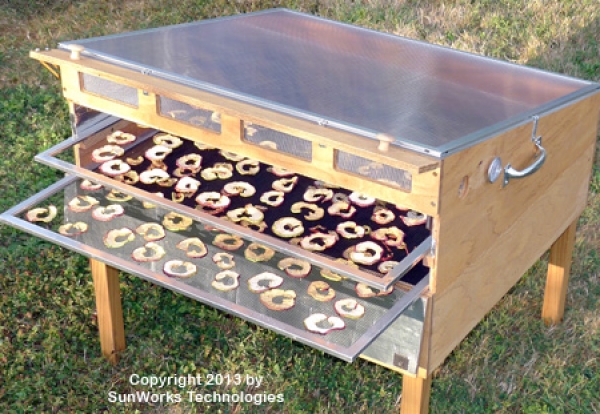
Cabinat with TrayVentilation holes are made in the bottom through which fresh outside air is sucked automatically. Holes are also provided on the upper sides of the dryer through which moist warm air escapes. This dryer has given encouraging results and reduced the drying time by one third compared to open sun drying. Temperature from 50-80 ºC is attained and drying time ranges from 2-4 days. Products like dates, apricots, grapes, chillies, turmeric etc, can be dried in a cabinet dryer.
2.2 Forced convection solar dryer (Convective dryer):
This type of solar drier consists of flat plate solar air heater of area (2×1) m2 connected with drying chamber. The solar air heater has 2 mm thick copper absorber plate coated with black paint to absorb the incident solar radiation. The absorber plate is placed directly behind the transparent cover (glass) with a layer of air separating it from the cover. The air to be heated passes between the transparent cover (glass) and the absorber plate. The gap between the glass and the absorber surface is maintained at 25 mm for air circulation. One side of the collector is connected to the blower with the help of reducer and the other side is attached with drier cabin. The 100 mm gap between the absorber and insulation is filled with sand mixed with aluminium scraps to store the heat during sunshine hours and to obtain hot air during off sunshine hours. The drying chamber is made up of mild steel sheet of 2 mm thickness with width, depth and height of (1×1×1.5) m respectively. The drier is capable of holding about 50 kg of chili per batch. The drying chamber is insulated with glass wool of 10 mm thickness. The solar air heater is tilted to an angle about 25o with respect to horizontal. The system is oriented to south face to maximize the solar radiation incident on the solar collector.
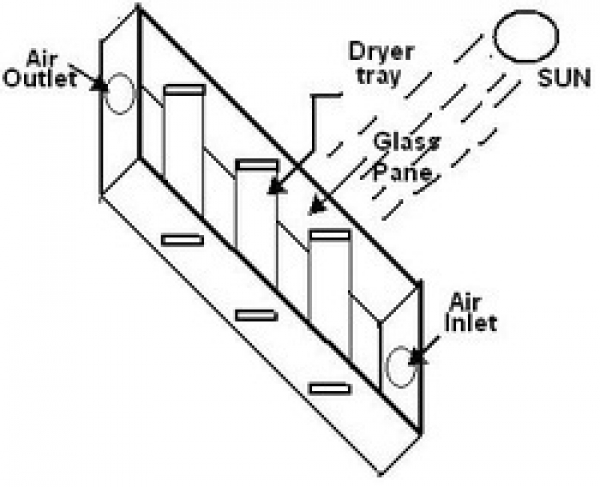
Solar Dryer
Experimental Setup of Convective Dryer3. Conclusions:
Experience over the past four decades has shown that in-spite of high potential of solar drying it has not so popular due to some of the reasons, which are
• Only in few countries has taken up systematic work on solar dryer.
• It has not been developed as a system.
• In industrialized countries, there is great interest towards solar drying. However, neither the temperature nor the heat requirement can be achieved with solar collector.
• Solar drying is considered more appropriate to low temperatures in storage type drying in tropical and subtropical countries.
• Pre-heating of drying air in batch dryers has been demonstrated to be techno-economically viable.
• Solar drying should be disseminated for medium and low scale.
There are different types of dryers are available. Those pictures are given bellow.
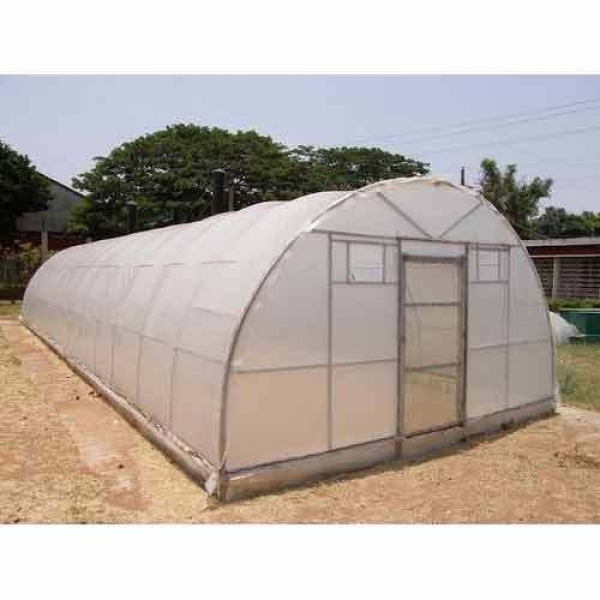
Poly House Solar Crop Dryer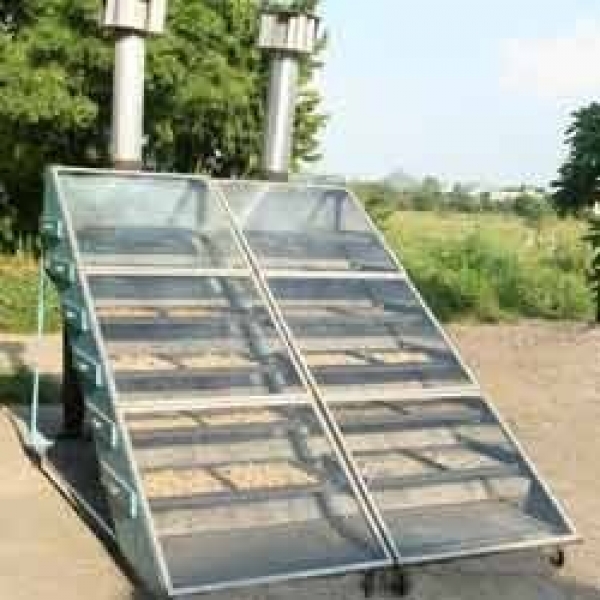
Solar Dryer with Glass Cover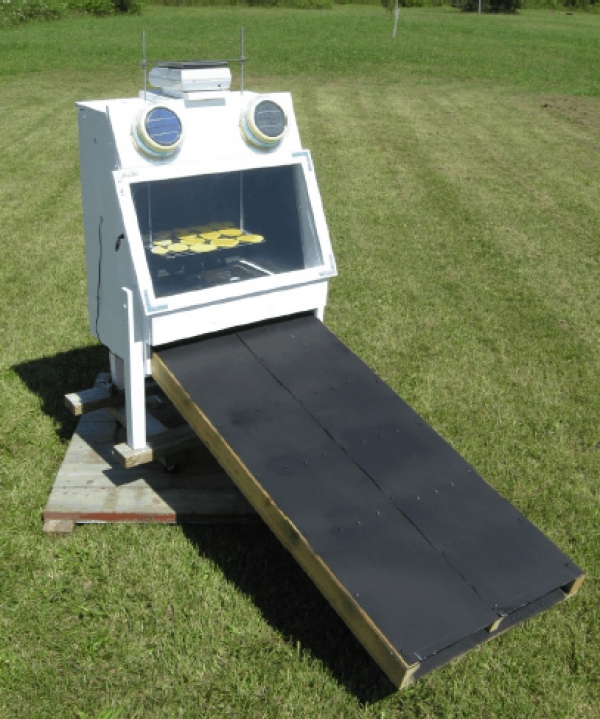
Solar Dryer with Temp Control
Solar Portable Dryers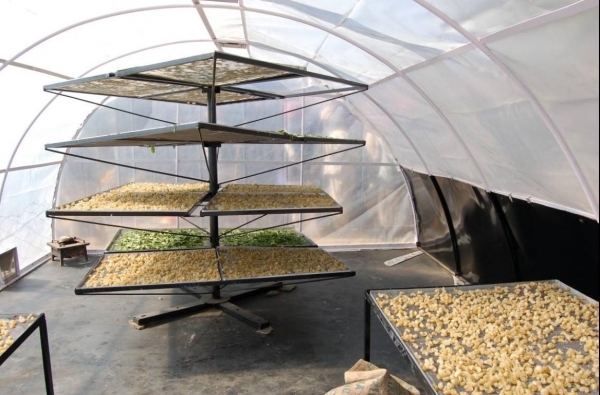
Tunnel Dryer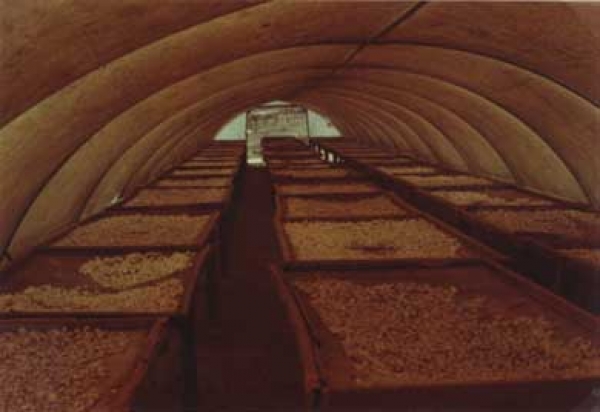
Tunnel Grain Dryer

